Quebec, the largest province in Canada, is a blend of old-world charm and modernity. It boasts a rich history rooted in strong Francophone culture. Here are 20 mind-blowingly fun facts about Quebec you won’t believe. From being one the largest producers of maple syrup in the world to having moose as crossing guards, these Quebec facts will put a smile on your face!
1. Quebec is the Largest Province in Canada by Land Area

Quebec City is located on the banks of the St. Lawrence River.
©bloodua/iStock via Getty Images
The land area of Quebec covers almost 600,000 square miles, encompassing forests, mountains, and coastlines. Moreover, its vast expanse accounts for about 15.4% of the total land area of Canada.
2. Quebec is One of the Largest Producers of Maple Syrup in the World
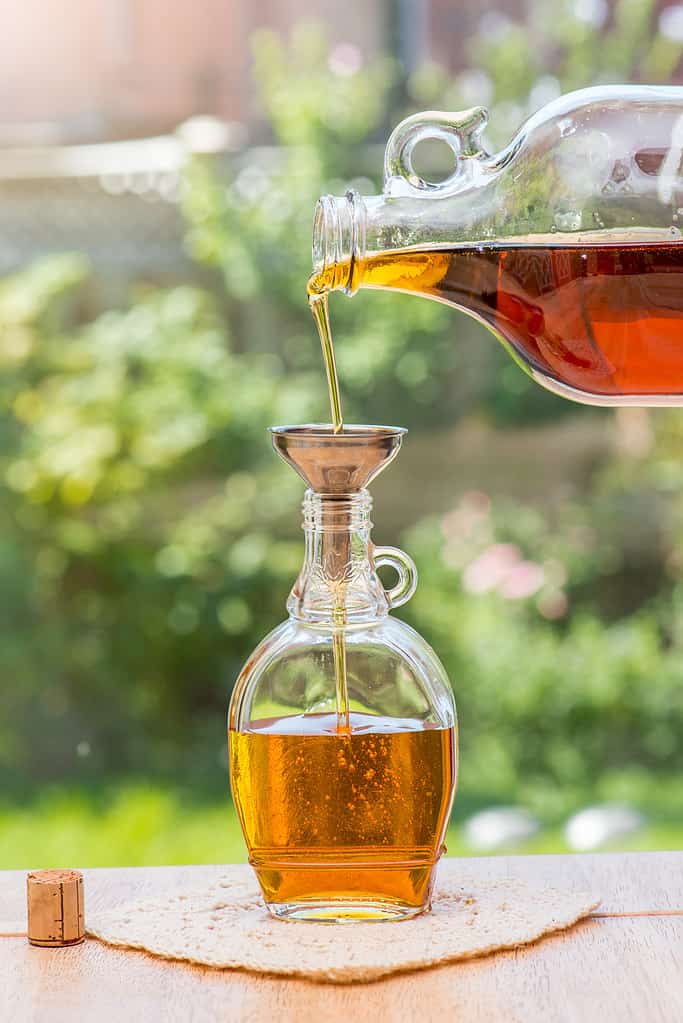
Quebec ranks among the highest producers of maple syrup in the world.
©Jun Zhang/iStock via Getty Images
Maple syrup is a symbol of the rich agricultural heritage of Quebec. Annually, Quebec produces over 11 million gallons of maple syrup, which is approximately 72% of the total production of Canada.
3. Quebec is Home to the Largest French-Speaking Population Outside of France
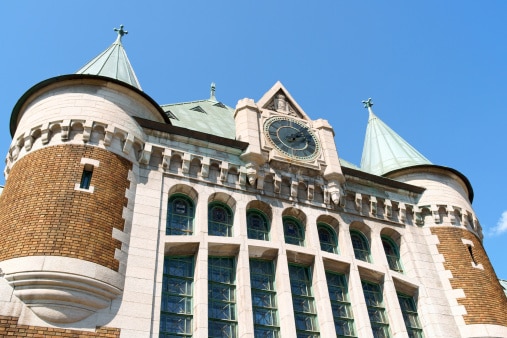
French-influenced architecture of the Gare du Palais, the railway and bus station of Quebec City.
©Massimiliano Pieraccini/iStock via Getty Images
From Old Quebec to Montreal, French speakers abound throughout the province. There is a large Francophone community in Quebec, which makes it both linguistically and culturally diverse.
4. Quebec Has a Thriving Film Industry

Montreal has been the filming location of many movies, including DiCaprio’s
Catch Me If You Can.
©André Chivinski from Sherbrooke (Québec), Canada, CC0, via Wikimedia Commons – License
Montreal attracts filmmakers from around the globe to its diverse locations, making it a bustling hub of cinematic productions ranging from independent projects to major Hollywood blockbusters.
5. Quebec Has a Unique Legal System Based on Civil Law Rather than Common Law
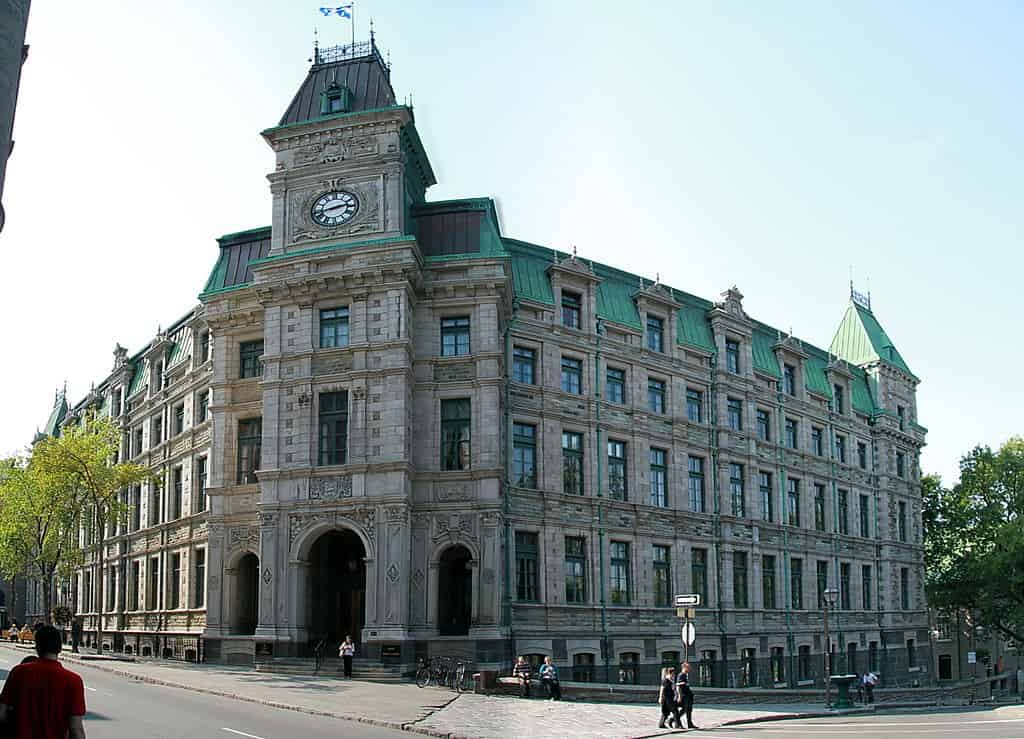
The Palais Justice-de-Québec in Quebec is a Cultural Heritage Site in Canada.
©Malimage, CC BY-SA 3.0, via Wikimedia Commons – License
The civil law system in Quebec governs a wide range of legal matters, including family law, property law, and contracts. Moreover, this distinctive legal framework sets Quebec apart from the rest of Canada, which follows common law practice.
6. Quebec is Famous for its Winter Carnival
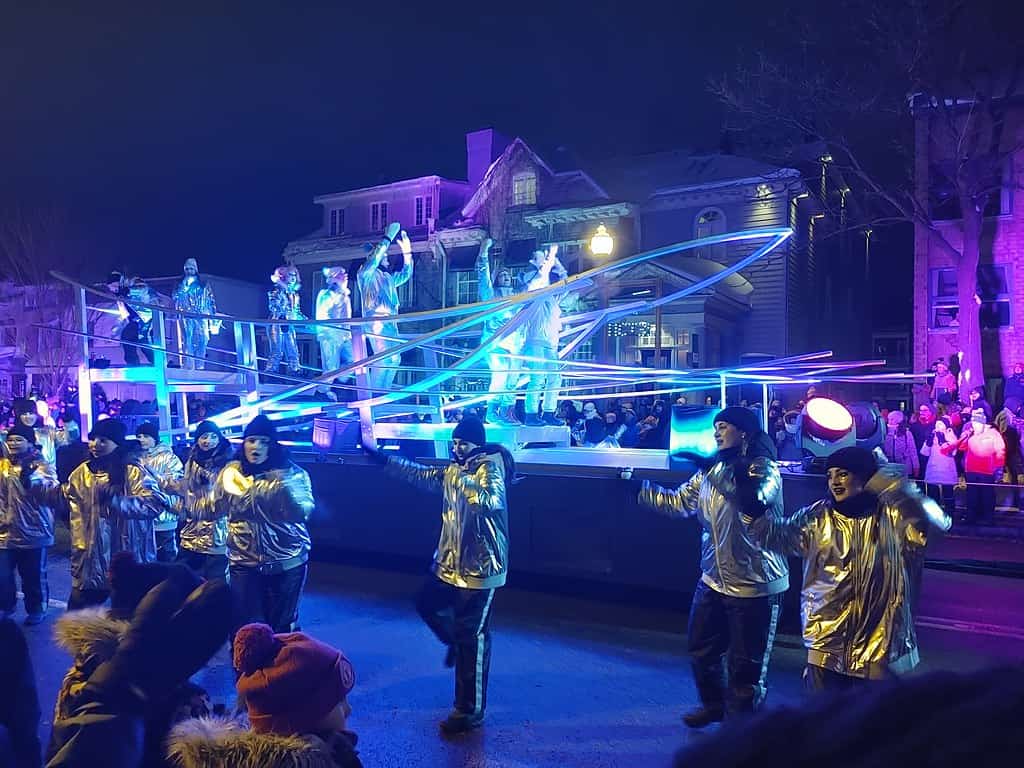
View of a marquee during the parade at Carnaval de Quebec.
©Jeangagnon, CC BY-SA 4.0, via Wikimedia Commons – License
Carnaval de Quebec, along with its mascot, Bonhomme Carnaval, transforms Quebec into a magical winter wonderland. A fun fact about Carnaval de Quebec is that the mascot has its own passport! The carnival is one of the largest winter festivals in the world, attracting over 400,000 visitors annually. Carnaval de Quebec spans over 17 days and features more than 200 activities, including parades, snow sculptures, ice canoe races, and other festivities. It is a major revenue generator for the region, bringing in approximately $42 million for the city of Quebec.
7. Quebec Has a Unique Flag, Known as the Fleurdelise
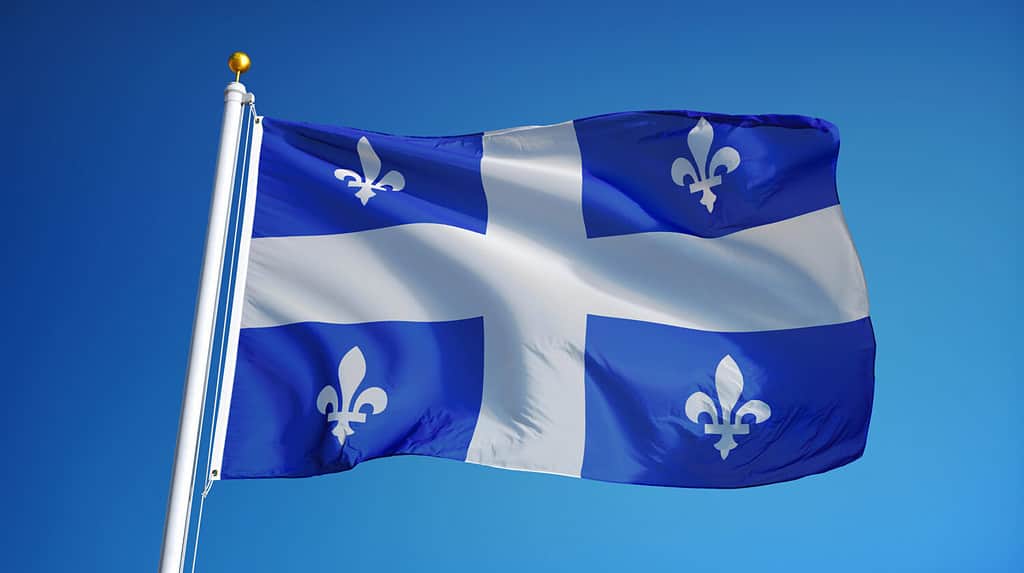
Fleurdelise is the name of the flag of Quebec.
©railway fx/Shutterstock.com
The flag of Quebec, known as the Fleurdelise, features a white cross on a blue field adorned with four fleurs-de-lis. The province adopted it as the official flag in 1948. The design and symbolism of the flag represent the Catholic faith and the historical ties Quebec has to France. The four fleurs-de-lis on the flag represent the four original provinces of New France.
8. Quebec is Home to Several World-Class Universities

The Arts Building at McGill University in Quebec.
©D. Benjamin Miller, CC0, via Wikimedia Commons – License
Quebec has a reputation as a global educational hub. McGill University, located in Montreal, has a diverse student body, with over 40,000 students representing more than 150 countries. Université Laval, situated in Quebec City, boasts a student population of over 42,500, including approximately 9,000 international students. McGill consistently ranks among the top universities globally, and Université Laval is renowned for its contributions to various fields of research and study.
9. Quebec Has a Rich History
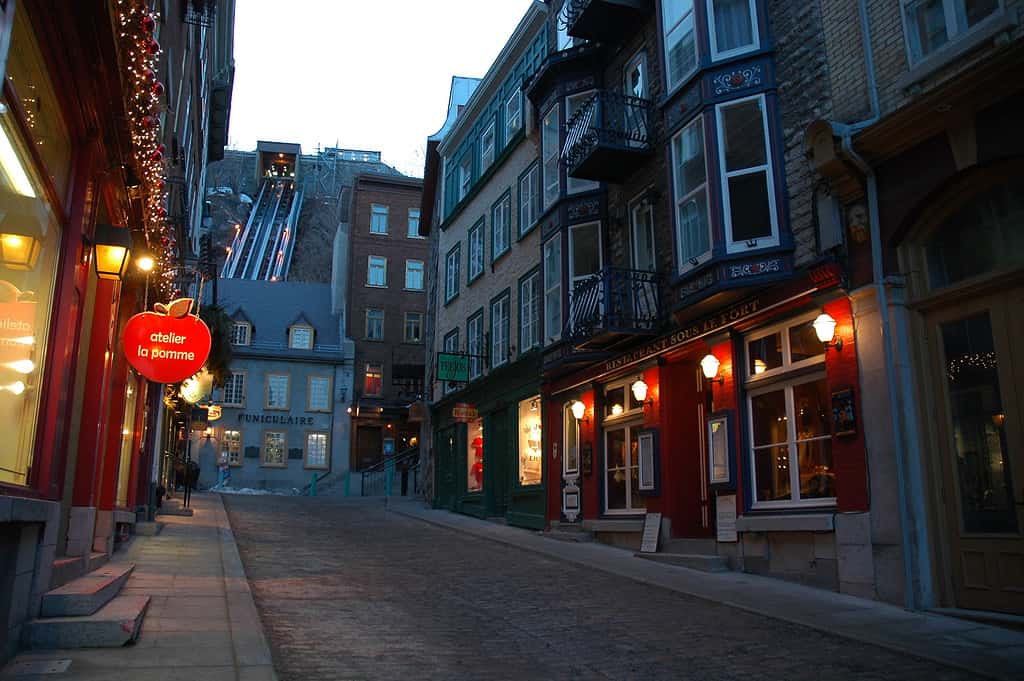
The charming streets of Old Quebec, a UNESCO World Heritage Site.
©Martin Couture, CC BY-SA 3.0, via Wikimedia Commons – License
With its cobblestone streets and centuries-old architecture, Old Quebec is a UNESCO World Heritage Site. The historic district contributes significantly to the tourism industry of Quebec. In 2021, Old Quebec generated over $8 billion in tourism revenue.
10. Quebec is Home to the Largest Underground City in the World

Map of RESO, the underground city in Montreal.
©Pwyf, CC BY-SA 3.0, via Wikimedia Commons – License
The underground city of RESO, or La Ville Souterraine in Montreal, is a network of interconnected tunnels, shops, and restaurants that spans almost 20 miles. RESO has over 120 exterior access points and 60 entrances to metro stations. Notably, it provides convenient passage for local commuters and visitors looking to explore the city.
11. Circus company Cirque du Soleil was founded in Baie-Saint-Paul, Quebec

Performance by Cirque du Soleil, under the Dufferin-Montmorency highway in Quebec City.
©Benson Kua from Toronto, Canada, CC BY-SA 2.0, via Wikimedia Commons – License
A little-known fun fact about Quebec is that two former street performers, Guy Laliberté and Gilles Ste-Croix, founded Cirque du Soleil here in 1984. An internationally renowned circus company, Cirque du Soleil has produced over 40 original shows and performed in more than 300 cities around the world. Moreover, the shows have won many accolades, including multiple Emmy and Gemini Awards.
12. Quebec Has the Largest Cantilever Bridge in the World

The Quebec Bridge over the St. Lawrence River is a National Historic Site of Canada.
©Martin St-Amant (S23678), Public domain, via Wikimedia Commons – License
Across the majestic St. Lawrence River in Quebec, the Quebec Bridge spans over 1,800 feet and has a height of over 341 feet. Constructed using almost 100,000 tons of steel, this early 20th-century bridge is a critical transportation link that accommodates both vehicular and railway traffic.
13. Quebec is a Significant Producer of Wild Blueberries
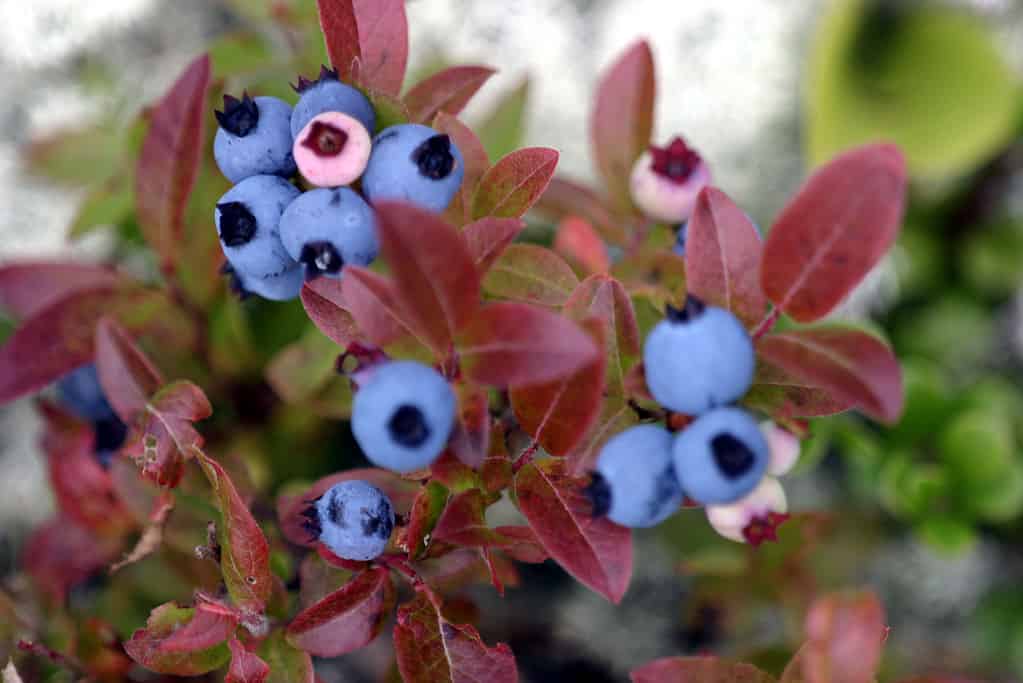
Harvest yield of blueberries in Quebec typically exceeds 100 million pounds.
©peupleloup, CC BY-SA 2.0, via Wikimedia Commons – License
Quebec is one of the largest producers of wild blueberries in the world. The majority of the crop is cultivated in the Saguenay-Lac-Saint-Jean and Cote-Nord regions owing to their favorable climate. The annual wild blueberry harvest yield in Quebec typically exceeds 100 million pounds.
14. Cote-Nord is one of the Longest Coastlines in the World
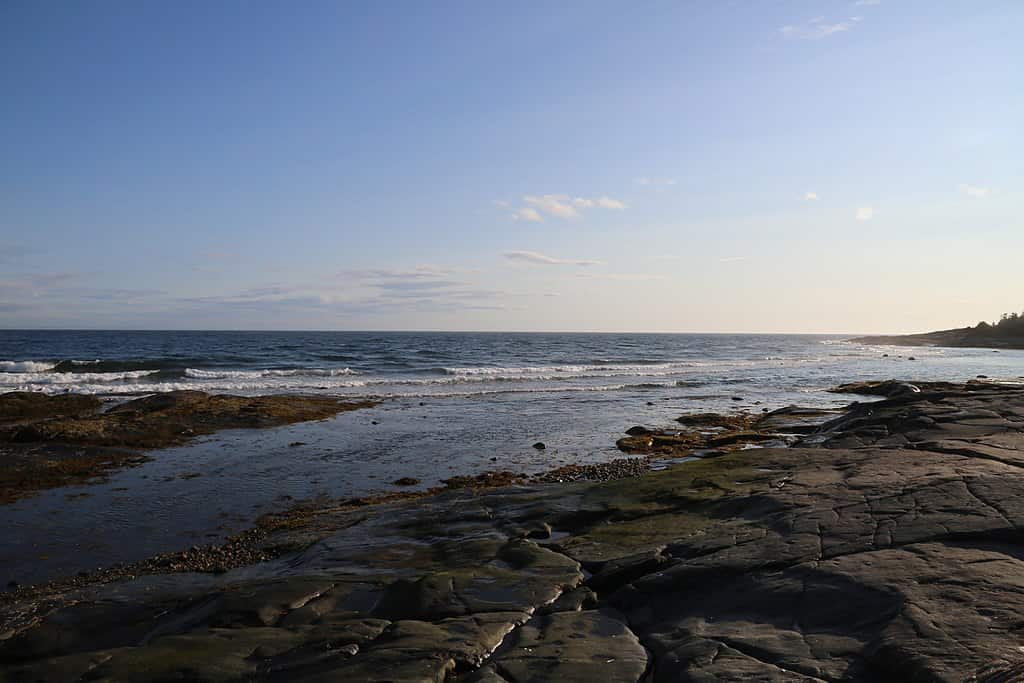
The Cote-Nord landscape of the St. Lawrence River in Quebec.
©Hélène Brousseau, CC BY-SA 4.0, via Wikimedia Commons – License
Stretching over 800 miles along the northern coast of the St. Lawrence River and the Gulf of St. Lawrence, Cote-Nord comprises bays and beaches with overhanging cliffs. A habitat rich in wildlife and marine life, the coastline contributes significantly to the fishing industry of Quebec. Moreover, the coastline attracts visitors from near and far, making it a key economic driver.
15. The Annual International Fireworks Competition

L’International des Feux Loto-Québec is a major international fireworks competition in Montreal.
©Matias Garabedian from Montreal, Canada, CC BY-SA 2.0, via Wikimedia Commons – License
Another fun fact about Quebec is that the city of Montreal hosts the annual International Fireworks Competition. The event is marked by light, color, and sound displays. Participants from around the globe dazzle with pyrotechnic performances that go beyond entertainment.
16. Quebec is Known for Poutine and Tourtiere
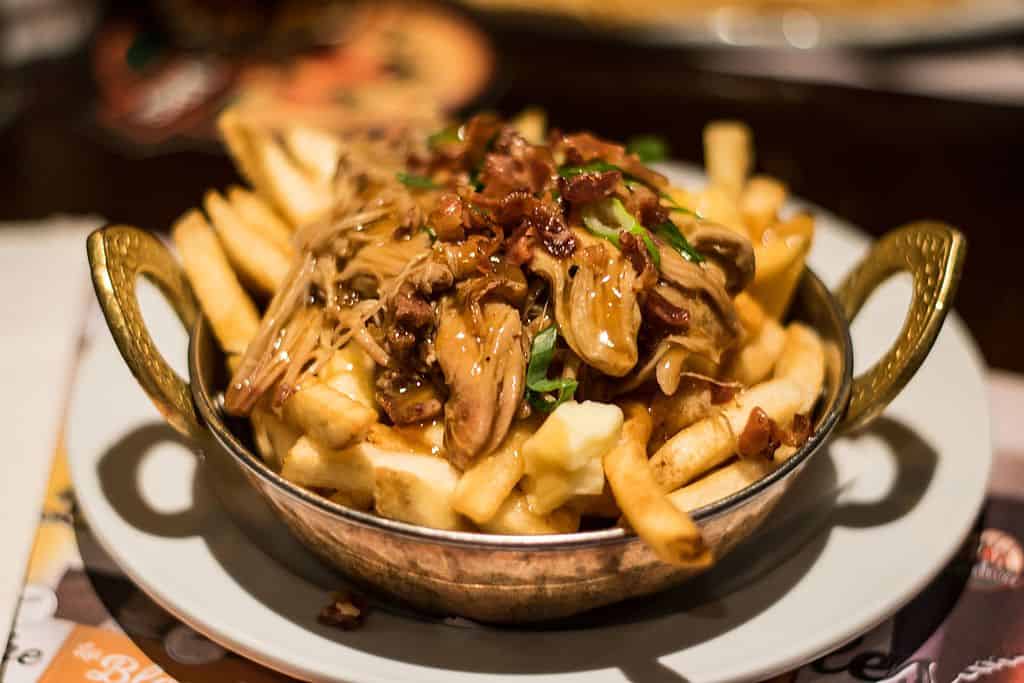
As a snack or a meal, Poutine is a staple on restaurant menus across Quebec.
©0x010C, CC BY-SA 4.0, via Wikimedia Commons – License
Poutine, or fries topped with cheese curds and gravy, is an iconic dish in Quebec. It was created in the 1950s. In addition, tourtiere, which is a traditional meat pie, is another Quebecois delicacy that adds to Quebecois cuisine.
18. Quebec is Home to One of the Oldest Cities in North America

View of the Quebec City skyline with Chateau Frontenac in the background.
©Songquan Deng/iStock via Getty Images
Quebec City, the capital of Quebec, is one of the oldest cities in North America. It was founded in 1608. The historic district of Old Quebec is a UNESCO World Heritage Site with landmarks such as Chateau Frontenac, a hotel, and the historic military fortress, Citadelle of Quebec.
19. Moose are Unofficial Crossing Guards

Moose on the road are a common sight in some regions of Quebec.
©Jp Valery jpvalery, CC0, via Wikimedia Commons – License
A fun fact about Quebec, the Gaspé Peninsula region is home to a significant moose population. Moose have been known to stand in the road to get drivers to slow down and use caution to avoid wildlife-vehicle collisions.
20. Quebec’s Official Motto is “Je Me Souviens”

The Quebec Coat of Arms with “Je me souviens.”
©I, Bouchecl, CC BY-SA 3.0, via Wikimedia Commons – License
The phrase “Je me souviens” (I remember) is the official motto of Quebec. It is emblazoned on the coat of arms and license plates. The phrase serves as a reminder of the history, traditions, and values of Quebec.
The photo featured at the top of this post is © R.M. Nunes/Shutterstock.com
Thank you for reading! Have some feedback for us? Contact the AZ Animals editorial team.






